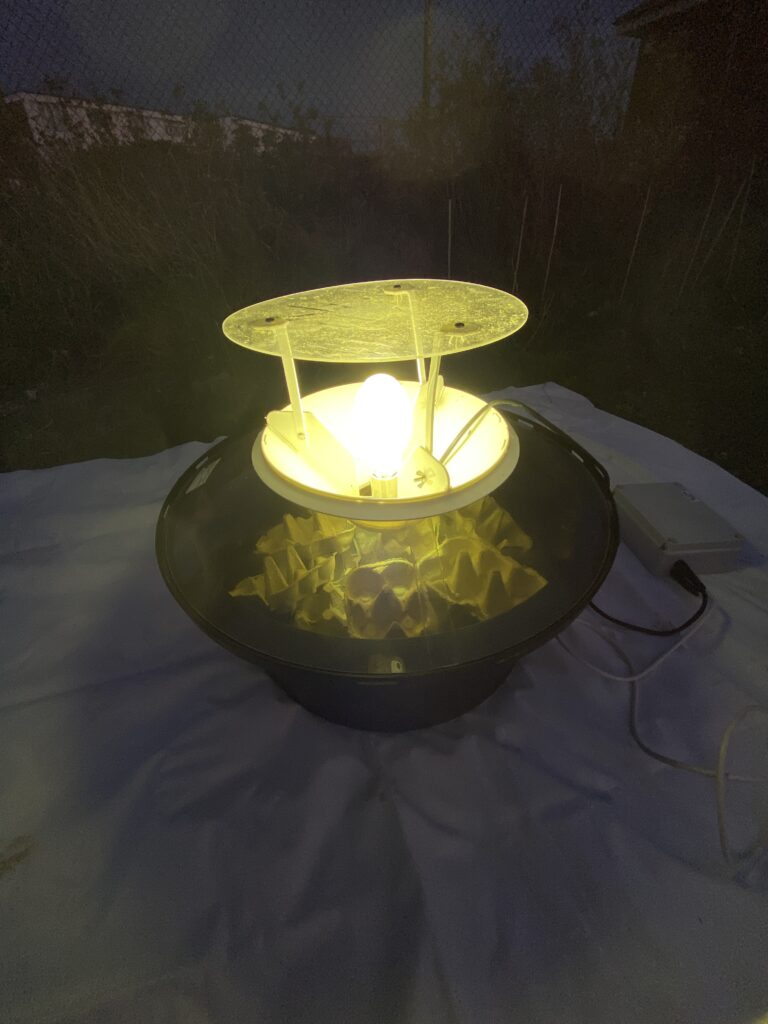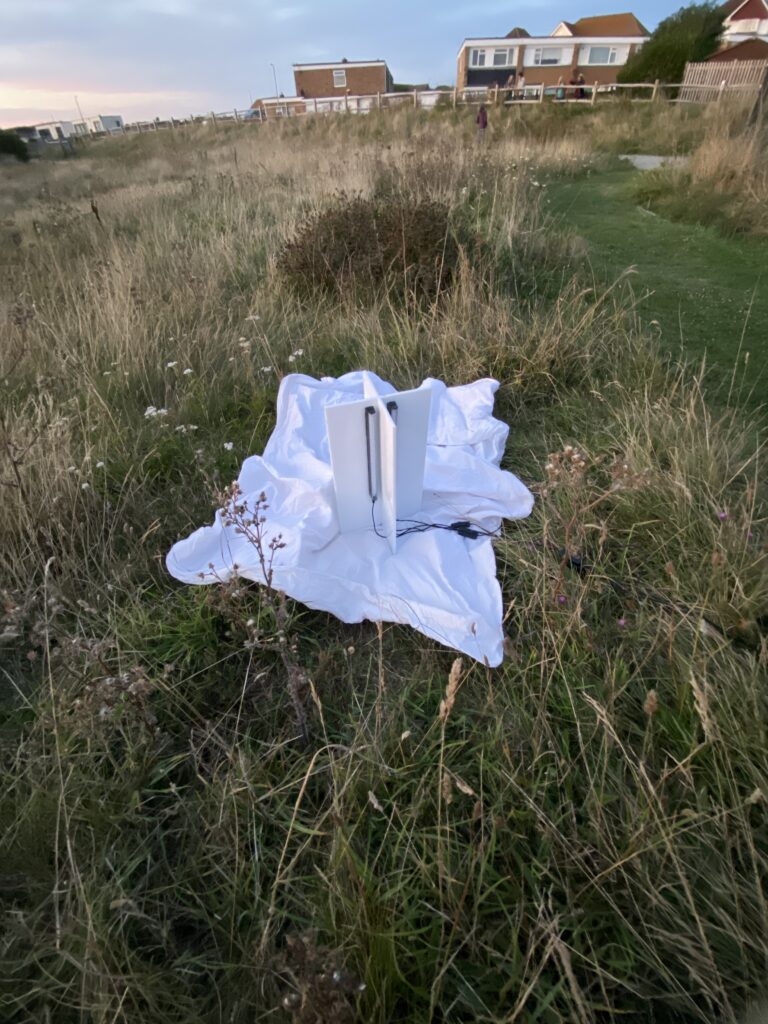Seaford Action for Nature have done quite a few flower surveys in the Pump field near Splash point but how is the field developing for insect life such as butterflies and moths?
In August we were delighted to welcome butterfly expert Dan Danahar to visit the fields with Jessie Rodriguez of Ouse Valley Climate action fund. He was pretty impressed with what the community groups in association with Seaford town council have done here.
We showed him the list of 9 butterflies and 10 moths/caterpillars spotted on the site to date. Local volunteers had also done two recent counts for this year’s Big Butterfly count which recorded 11 and 9 butterflies of three species.
What we don’t tend to do is visit the field at night, or in the dark. As most moths only come out at night, Seaford Action for Nature came up with a cunning plan. On a dry still evening in August we invited a number of local moth enthusiasts from Seaford Natural History Society to meet us there at dusk for a couple of hours.
We brought nibbles to keep us going and the “low-tech” approach was to drape white sheets around and shine lanterns and torches on them. Luckily volunteers were also able to bring two higher tech powered moth traps which were soon covered in insects from tiny beetles and grasshoppers to moths.
Different moths come out to feed at different times, and the first half hour it was obviously the turn of the Orange Swifts as many came out to play! A beautiful green moth turned out to be a Green Silver-lines. This is apparently quite a common moth near broadleaved trees usually oaks but a bit odd as currently there are no trees nearby, as these struggle to survive so close to the sea!
The Ox-tongue Conch lays its eggs on Bristly ox-tongue which is common nearby and since arriving in 1993 has colonised much of the south coast. The Marbled Green is another species mostly occurring on the coast of southern England. The Flame Shoulder moth often occupies woodland fringes, gardens and meadow and the caterpillars feed on low plants including dock and plantain (both common in the field).
The Rusty Dot Pearl is mainly a migrant species which flies at night attracted to light. All in all we spotted 14 species, bringing the total for the site to 25. A great result and a great night! When can we do it again?
Seaford Action for Nature





